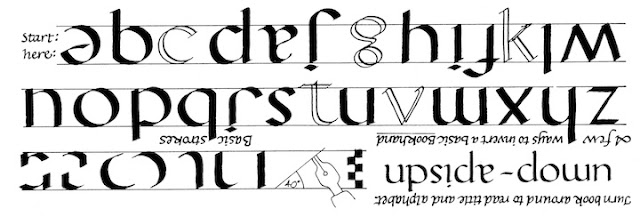When you lay out your design, look for the One Big Thing about the text that you want the viewer to grasp visually before reading the words. Compare these:
The invitation on the left is decorative, legible, and balanced, but your eye gets lost among the strokes, and important information competes with details for your attention.
The invitation on the right guides you through the wording with a firm hand, clearly signaling which words have major, minor, or minimal importance. Painters, also, are taught to deal with foreground, middle ground, and background in composing a landscape; calligraphers learn to make similar design categories. What do you want the reader to notice first, soon, and eventually?
A second example illustrates the same point. This quotation could have been much more complicated, with different styles and sizes for each phase of life and a layout with more going on. But the text itself is so powerful that it does not need you to over-interpret it. As composer Gustav Holst said, "If what you have written looks complicated to you, you should doubt its authenticity."



















































